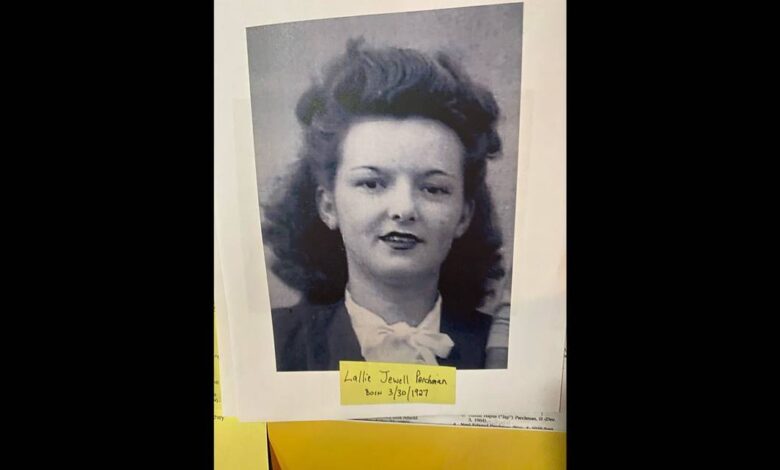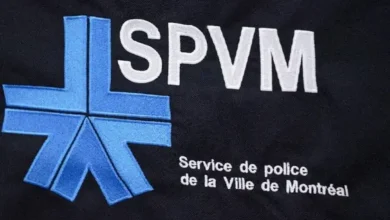
The arrest of an 81-year-old retiree living at a retirement home in Hollywood, Florida, in connection with the infamous murder of Jewell “Lalla” Langford in Canada nearly 50 years ago has brought closure to a cold case that had haunted investigators for decades [1]. The victim, 48-year-old Jewell Langford, was found floating in the Nation River in Ottawa in 1975, and her murder remained unsolved until her identification led to the recent arrest [2]. This arrest not only highlights the persistence of law enforcement agencies in solving long-standing cases but also showcases the advancements in forensic technology and investigative techniques that have aided in solving cold cases.
The Persistence of Law Enforcement Agencies
This particular case is just one among many unsolved murders in Canada, with hundreds of cases remaining open [5]. Despite the passing of time, law enforcement agencies have never given up on their relentless pursuit of justice for the victims and their families. The arrest of the Florida retiree stands as a testament to their unwavering dedication and perseverance. The closure brought to the family of Jewell Langford shows that justice can be served, even after decades of uncertainty and pain.
Over the years, investigators had faced numerous challenges while working on the Langford murder case. Witness testimonies had faded, physical evidence had deteriorated, and leads had gone cold. However, the commitment of the investigators and their refusal to let the case slip into oblivion played a pivotal role in eventually solving the crime.
Law enforcement agencies often face difficulties in cold cases, as memories fade, witnesses relocate or pass away, and evidence becomes harder to trace. However, the case of Jewell Langford demonstrates that these challenges can be overcome with tenacity, collaboration, and the judicious use of emerging technologies.
Advancements in Forensic Technology and Investigative Techniques
The breakthrough in the case was made possible by the use of cutting-edge forensic technology and investigative techniques. DNA tests and genetic genealogy played a pivotal role in identifying the suspect, whose involvement in the crime was concealed for nearly half a century.
These technological advancements have revolutionized criminal investigations, providing a glimmer of hope for cases that had once been considered unsolvable.
In the past, solving cold cases like Langford’s seemed almost impossible due to the lack of sophisticated tools and techniques. DNA testing, now a routine part of crime-solving, was not widely available in the 1970s. However, advances in forensic science, particularly DNA profiling, have been instrumental in solving numerous cold cases, unraveling mysteries that had long baffled investigators.
Genetic genealogy, another breakthrough technology, has proven to be a game-changer in solving cases that had reached a dead end. By comparing the DNA evidence from crime scenes with publicly available genealogy databases, investigators can identify distant relatives of the suspect and work their way back to the perpetrator. This has been particularly useful in cases where traditional DNA databases have yielded no matches.
The successful use of DNA and genetic genealogy in the arrest of the Florida retiree has opened up new possibilities for solving other cold cases, and it serves as a beacon of hope for families who have been waiting for answers for decades.
The Impact of Solving Cold Cases
The arrest of the Florida retiree has not only solved a 48-year-old cold case but has also provided a sense of closure and justice to the victim’s family. The pain and loss experienced by the victim and her loved ones can never be fully erased, but knowing that the perpetrator will face justice can offer some comfort and peace of mind. This case serves as a reminder of the lasting impact that unsolved crimes can have on families and communities and the importance of resolving such cases to bring healing and closure.
In addition to providing closure to the victim’s family, solving cold cases also has a broader societal impact. It sends a powerful message that justice knows no time limit and that perpetrators can never rest easy, no matter how much time has passed since their crime. This can act as a deterrent to potential criminals, knowing that they might be held accountable for their actions many years later.
Moreover, solving cold cases helps restore public trust in law enforcement agencies. Cold cases often remain open wounds in communities, leaving residents with lingering fears and unanswered questions. The resolution of these cases demonstrates that no case is ever forgotten, and law enforcement agencies are committed to seeking justice for every victim, regardless of how much time has elapsed.
The Legal Process and the Pursuit of Justice
As the 81-year-old retiree faces charges related to Langford’s murder in Ontario, the legal process will unfold, subjecting the suspect to the justice system’s scrutiny [3]. The upcoming trial will provide an opportunity for the truth to be revealed, shedding light on the events that unfolded 48 years ago and holding the perpetrator accountable for their actions. The court proceedings will also serve as an example of the justice system’s dedication to upholding the rule of law, regardless of the passage of time.
The legal proceedings surrounding cold cases can be complex and challenging, especially when dealing with evidence and witnesses from many years ago. However, advancements in forensic science, as witnessed in the Langford case, have significantly enhanced the ability to present compelling evidence in court. This includes reexamining physical evidence, utilizing advanced forensic testing methods, and leveraging expert witnesses to build a robust case against the accused.
The trial will also provide an opportunity for the families of both the victim and the accused to confront the past and seek a sense of closure. For the family of Jewell Langford, the trial may bring up painful memories and emotions, but it can also offer them the chance to see justice served. On the other hand, the accused’s family will likely experience their own emotional turmoil, grappling with the revelation of a dark secret that had remained hidden for decades.
A Turning Point for Cold CasesA Turning Point for Cold Cases
The resolution of the Jewell Langford murder case is a turning point in the investigation of cold cases worldwide. It underscores the significance of never giving up on seeking justice and the potential for solving long-standing mysteries using advanced forensic methods. With each cold case solved, law enforcement gains valuable experience and knowledge, strengthening their ability to tackle similar challenges in the future.
This success story in Canada may serve as a catalyst for other countries to invest more resources into cold case units and explore innovative forensic technologies. As technology continues to advance, we may witness an increasing number of cold cases being solved, providing answers to grieving families and bringing closure to communities.
It is worth noting that the resolution of cold cases is not just limited to murders. Many other criminal cases, such as sexual assaults, disappearances, and robberies, remain unsolved. The techniques used to solve Langford’s case can potentially be applied to a wide range of unsolved crimes, offering hope to countless other victims’ families who are still seeking answers.
A Tribute to Jewell “Lalla” Langford
As the details surrounding Jewell “Lalla” Langford’s murder continue to emerge during the trial, it is essential to remember her as more than just a victim. She was a prominent U.S. businesswoman, whose life was tragically cut short. By highlighting her achievements and contributions to society, we can honor her memory and bring attention to the impact her loss had on her family and friends.
Remembering the victims of cold cases humanizes them beyond being mere statistics. Their stories resonate with people, creating empathy and fostering a sense of solidarity within the community. By commemor
ating the lives of victims like Jewell Langford, we acknowledge the void left by their absence and recognize the importance of bringing closure to their families.
The recent arrest of the 81-year-old Florida retiree in connection with the 48-year-old cold case murder of Jewell “Lalla” Langford in Canada signifies a significant breakthrough in the pursuit of justice for unsolved crimes. It showcases the persistence of law enforcement agencies and the remarkable advancements in forensic technology and investigative techniques that have transformed the landscape of criminal investigations. While the legal process unfolds, this case serves as a reminder of the lasting impact of unsolved crimes on victims’ families and communities. By continuing to pursue justice for cold cases, we can bring closure and healing to those affected by these tragic events. As we honor the memory of Jewell “Lalla” Langford, let her story inspire us to never give up on seeking truth and justice for all victims of unsolved crimes. The successful resolution of this case offers hope for countless other families awaiting answers, demonstrating that justice, no matter how delayed, will ultimately prevail.



